It is said that music has no boundary. I have seen people travelling thousands of miles to attend a music festival. Music festivals are not only about music. They are beyond music. It is an experience. It is about creating and spreading good vibes. It is about meeting like-minded people and singing songs with someone you have never met before. For some people it may be an escape from the rigid conventional lifestyle.
Music is like self evolution. It helps us connect with our inner self. You start listening to certain kind of music and it evolves as your sub-conscious mind demands something different or music with some deeper state of consciousness especially when it comes to psytrance music. Psytrance music and culture has been growing and continuously rising since early 1970s, because of the internet. In this era of cutting edge technology, people are connected to each other from all over the world and via internet. Thus, Internet unites them all.
Nepal Calling:
In April 2015, lot of hippies and electronic music lovers from all around the world gathered at Kathmandu, Nepal for ‘Universal Religion – A Psytrance Music Festival’. This four-day event was to feature electronic dance music (EDM) artistes from all over the world. Several sub-genres of psychedelic trance music and has been dubbed as the festival of music, love and peace.
The festival, which was scheduled to be held from April 24 in Kakani, Nuwakot, unfortunately, has just been cancelled, 36 hours before its start. On their Facebook page, the organizing team mentioned ‘some unexpected last moment serious legal issues involving safety of the participants’ to explain the sudden cancellation. Many tourists travelled from different countries to attend Universal Religion. More than 1,000 people were expected to attend this festival. lot of people were on their way to Nepal. The post on Universal Religion’s Facebook page provoked different reactions from the festival-goers. Some showed their support to the organizers stating that cancellation is always a possibility here for psyche events. Still, most of those who had already bought their tickets were criticizing the lack of professionalism of Universal Religion. No one could actually modify their plans. Festival organizers were still trying to get it sorted. In the meantime, people who have already arrived in Nepal, started looking for an alternatives. No matter how small the country Nepal is but culturally it is very rich, there were lots of things happening around.
It is said that when lot of people gather at one place with pure intentions, the energy of each counts and that makes the way for everyone. That’s what happened in Kathmandu. By late evening, the latest news was saying the organizers had managed to set up a mini-version of the festival at a new venue in the valley of Kathmandu, Hattiban. With free bus rides starting from a popular local bar-café called Funky Buddha. In just 24 hours, they have shifted everything to new venue. Nobody opposed but everyone appreciated the continuous efforts of organizers to make it happen.
The Earthquake:
On the frightful morning of 25th April 2015, Curios backpackers were ready with their bags and tents, standing outside the café to catch the bus to new venue. Around 50 to 70 people left for new venue Himalayan height resort, which was somewhere in the mountains, in outskirts of Kathmandu city. Festival was already delayed, but the people still had that mood to party. The bus was moving ahead with loud music and suddenly we were interrupted. The earth was shaking. At first, we had no idea what was going on but the continuous shakes made us realise it was an earthquake. It lasted about 30 seconds. we watched an entire building collapse in front of our eyes while we were still in the bus. I noticed everyone was coming out from buildings and running around, tall buildings were turning into rubble. I didn’t panic, thought lots of people around us did. After the shaking stopped, people were shocked but it was necessary to get out of the affected area so bus moved ahead and get to an open space. We were safe in the bus but we were close enough to feel the fear. The roads were damaged and there were also cases of land sliding so we didn’t go ahead without making sure that the road ahead is safe. We have escaped physically unscathed but emotionally traumatised as we passed through the destruction in search of a safe route to the hills. We saw lifeless bodies, injured men, women and children, hospital beds on the streets, military vehicles zipping up and down the streets filled with lost people in what looked exactly like a scene out of World War Z or any apocalypse movie. And all this was in the first hour of the first earthquake. We took 2-3 breaks in between and we reached the mountains. The venue was 5 km up in the hill. Everyone took a deep breath for a while and got ready to reach up on the mountain. With all the luggage and camping gears everyone moved on towards their calling.
Camping at pine forest:
In the following 4 days, we found refuge at the pine forest on the hills. Upon reaching to the hills, we found out that festival had been cancelled due to earthquake. There was no option for to go through with the festival. Nepal was in ruins and after shakes were rolling in. But organizers now took on the responsibility to assist and secure the area and all its 500 + guests. They had provided an open space where people could pitch their tent and settle down. By now, it was evening and the enormity of the tragedy had begun to sink in and nearly 200 people — most of them tourists — were also taking refuge in the pine forest. They started pitching their tents, those who had come without tents, were provided a tent. Not a rupee was taken from anyone. In general, people had begun to settle down by then, but periodic aftershocks kept stirring up panic. Supply chains had been broken, electricity cut in periods of time, no network for our phones, but we were safe. Everyone had a place to sleep and food accessible to them. We also noticed how there was no help from the Government or any organisations. We soon realised that the most effective way to help is to help the ones around us. That time I finally gave in to my adventurous spirit and had a whale of a time filming everything around me. People, music, mountains, water springs, landscapes.
Connectivity:
We tried calling immediately after the quake but our mobile phones had no reception. Our phones were useless once the battery was down and it was difficult to find a place to charge them. The internet was up for a short while after the earthquake which was critical for us to get in touch with our family, but once it went offline we had to rely on telephones. And telephones on the mountains were not working. Help from Local Community:We were in Kathmandu city area for only a short period of time after the earthquake so we didn’t see too much of a response from the city and locals at the time. Once the earthquake occurred we could see everyone huddled in open fields and on the streets.However, there was an article in the newspaper I read that mocked the military and mentioned that the civilians did a better job helping one another. I can’t really say if this was true but yes, for the little time we were there after the quake, we saw locals helping one another out. Authority and organisation is critical in disaster situations – for example, when the military was distributing food and water in the airport, everything was a free-for-all. I was disheartened to see that even when people went to collect medicines and food, the airport officials were collecting bribes from various people to distribute these supplies. I didn’t even have a chance to get food; people were pushing and shoving like a riot so I didn’t even bother. The problem I found was that we didn’t need the food and water as much as those living in the villages that lost everything – including drinking water – so it should have been given to them. It made little sense to give the resources to those that were leaving the country. These things have really begun to piss us off! And on some level, we’ve been reborn – a new humanitarian side has emerged.
My Imagination of Universal Religion:
After coming back India, when I looked back at the photos and videos I had collected during the Nepal adventure, I realized how wonderful those memories were, to look back on. I noticed how everyone of us watched out and cared for each other in this time of absolute chaos. Could that be The Inspirational Tale which would serve as a testament for Universal Religion. With the same philosophy as during the refugee camp, after experiencing the power of Universal Religion, we were able to rub off borders from the maps in our mind. The world had slowly started to seem as one. Imagination of the world where family and friendships transcended nations, language, color, age and even blood barriers. Where an entire generation would live true to the ideas of love, peace and oneness.
Conclusion:
I look at life a bit differently now knowing how that one event has changed us. Despite the catastrophes that were the earthquakes, I remember happy moments spent on the hill. Those were exhilarating moments. I felt I was also able to connect better with people around me. I celebrated the differences I found in them and enjoyed the similarities we shared with one another. There was a lot of joy and learning. I also met some really great people and we have formed a strong bond of friendship that I hope will last forever. Those days taught me to live my life in the most practical ways possible.
The devastating earthquake left a trail of destruction, but the unwavering hippie trail of the Himalayan region still attracts thousands of travelers.


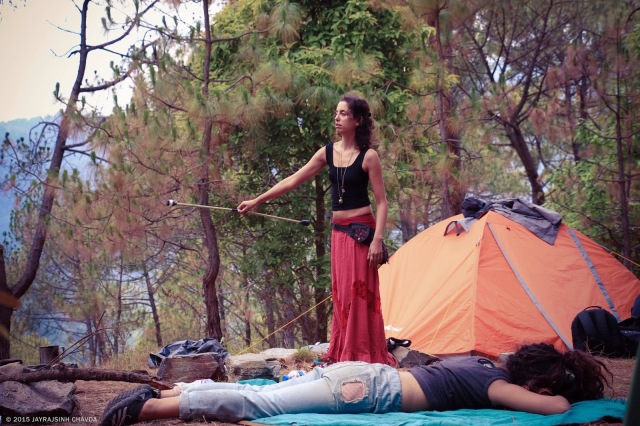
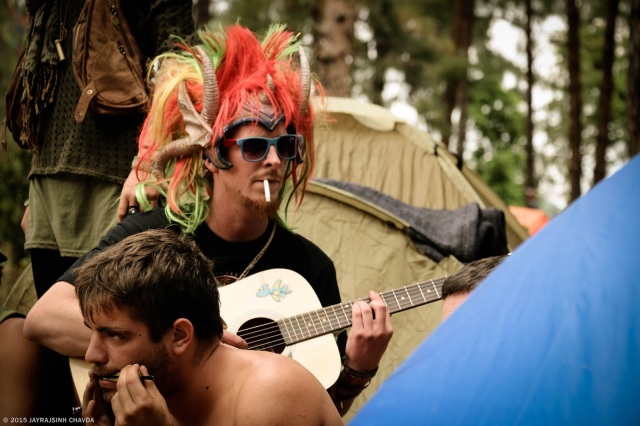



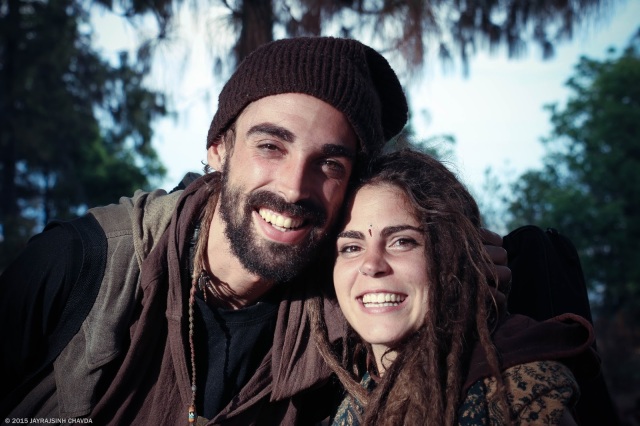


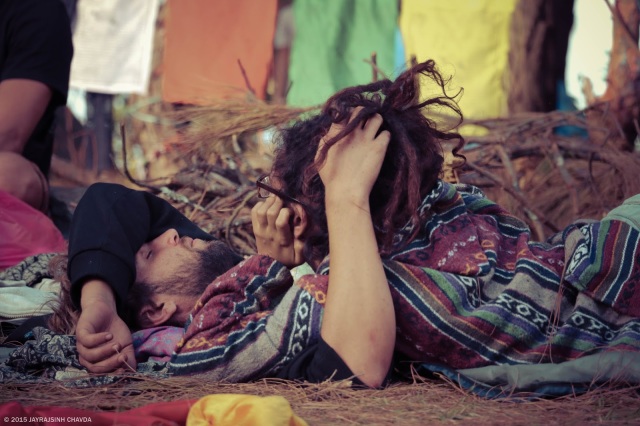

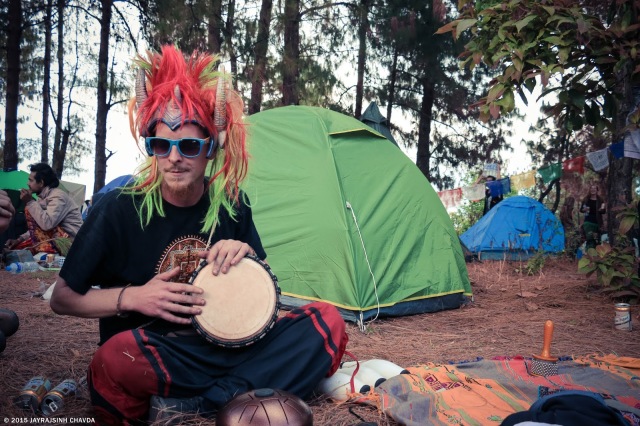



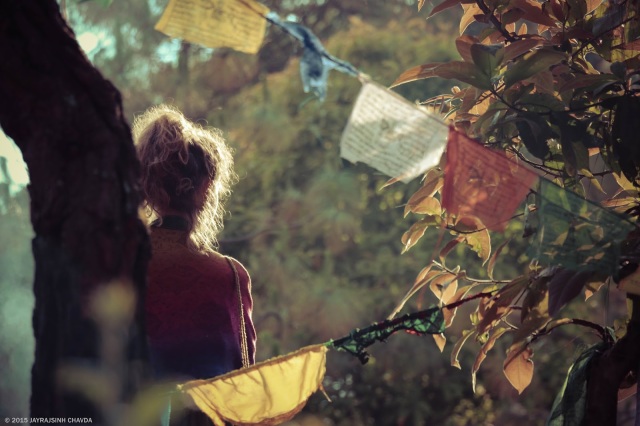



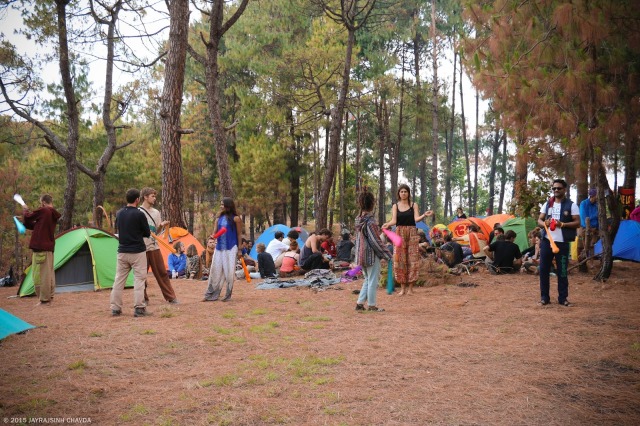


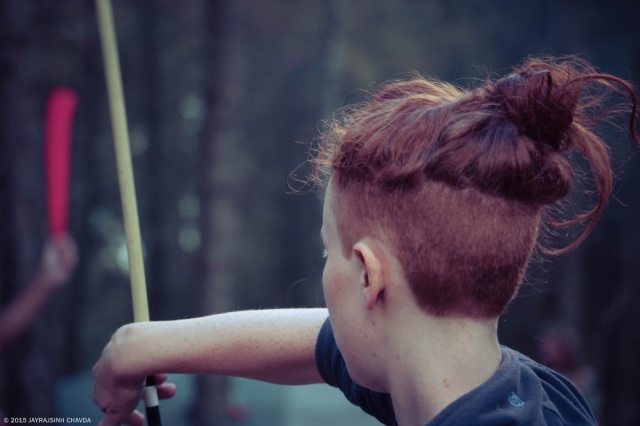

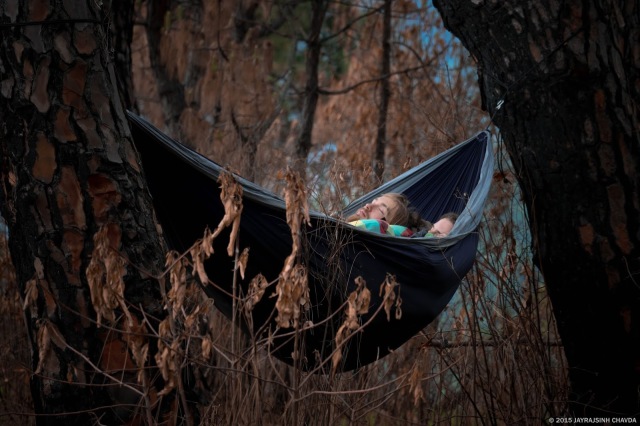
Jayrajsinh Chavda thanks for sharing your write-up of the situation. What we had there on the Hattiban Hill will forever stay with me, the spirit and sense of community was both unique and universal.
LikeLike